
2024 Volkswagen Passat
- New releases
- Sep 01
- Share post
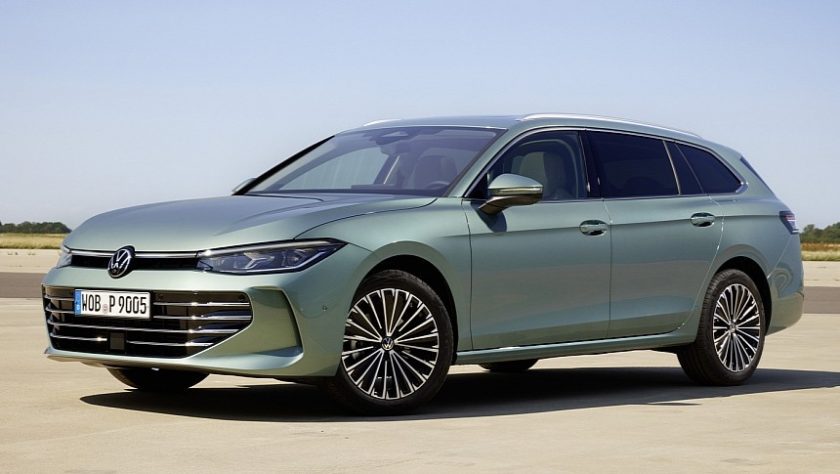
A new Passat is finally here with us. In previous generations, the VW Passat and Skoda Superb shared a familiar connection, featuring distinct body designs and a larger presence within the Skoda lineup. However, the latest iterations will maintain the same dimensions and body structure while introducing unique front and rear facades as well as interior designs. Compared to its forerunner, the new Passat wagon boasts noteworthy size enhancements, measuring 144mm longer (4917mm), 20mm wider (1852mm), 7mm taller (1482mm), and offering a 50mm longer wheelbase (2841mm).
The Passat’s design takes inspiration from Volkswagen’s latest models, including the recent Golf and the upcoming next-generation Tiguan. It showcases a distinctive shoulder line, matrix LED headlights that offer enhanced brightness, and an LED tail-light bar featuring 3D elements.
For those seeking a sportier aesthetic, the R-Line sports package remains an option, featuring unique front and rear bumpers and alloy wheels that can go up to 19 inches in size.
The new wagon boasts an impressive drag coefficient of 0.25, a significant improvement over the previous model’s 0.31, contributing to better fuel efficiency. This is achieved in part by the inclusion of air curtains in the bumper, which help direct airflow to the brakes.
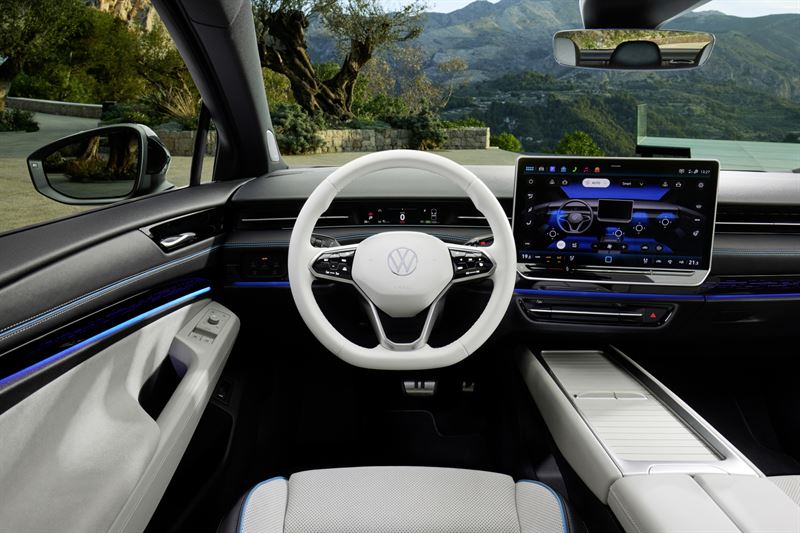
Interior Space
Inside the vehicle, you have the choice of either a 12.9-inch or 15-inch infotainment touchscreen, a notable upgrade from the current 8.0 or 9.2-inch options. These screens are elegantly oriented in a tablet style, prioritizing the driver’s convenience and experience.
While operating on Volkswagen’s latest software, which conveniently keeps air-conditioning controls accessible at the screen’s bottom, there is an issue with the touch-sensitive sliders below the screen. Unlike the VW ID.7 electric car, these sliders do not appear to have illumination for improved nighttime usability, which has stirred some controversy.
The steering wheel, in line with VW CEO Thomas Schafer’s commitment, features physical switches rather than touch-sensitive buttons. These controls are conveniently positioned in front of a 10.25-inch digital instrument cluster.
To optimize space within the center console, the gear selector has been relocated to a stalk on the right side of the steering column. Additionally, indicator and wiper functions have been consolidated into the left steering column stalk.
The screen integrates seamlessly with Apple CarPlay and Android Auto support, satellite navigation, and a Car2X system that establishes connections with traffic signals and road infrastructure throughout Europe.
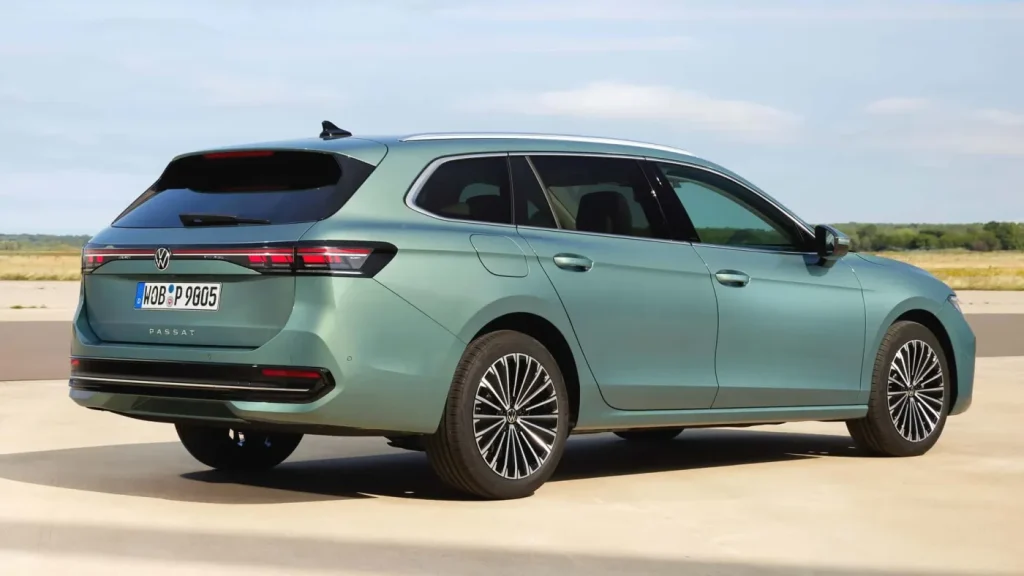
Features
Regarding cargo space, it offers a generous 690 liters with the rear seats up, measured to the top of the backrests, or a cavernous 1920 liters with the seats folded down. This represents an increase of 40 and 140 liters, respectively, compared to the previous model.
Impressive available features encompass a head-up display projecting vital information onto the windshield, 45-watt USB-C charging ports, three-zone climate control for optimal comfort, keyless entry and start for added convenience, a power tailgate equipped with a kick sensor, and ambient interior lighting that sets the mood. The seats in the standard versions come with 14-way power adjustment, heating, cooling, massaging, and four-way power lumbar support available in either suede or leather upholstery depending on the model. R-Line models on the other hand feature single-piece sports seats.
Volkswagen proudly asserts that the new Passat offers an additional 50mm of rear-seat legroom compared to its predecessor, complemented by softer interior materials, improved sound insulation, double-glazed side windows, and an acoustic film on the windscreen for a more serene driving experience.
Advanced safety technologies include autonomous emergency braking, lane-keep assist, adaptive cruise control, lane-centering assist (Travel Assist), blind-spot monitoring, rear cross-traffic alert, traffic sign recognition, hands-free parking, and automatic high beams, ensuring a secure journey.
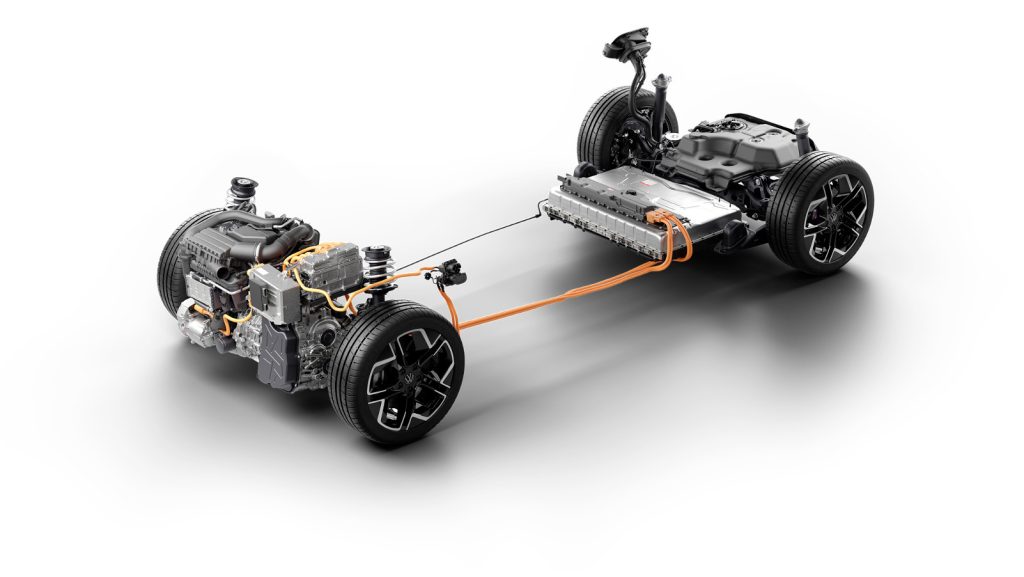
Power Trains
Powering the latest Passat is a diverse range of petrol and diesel engines, including two plug-in hybrid options that can provide up to 100 kilometers of electric driving range. The petrol lineup includes a 1.5-litre turbocharged four-cylinder engine with 110kW and front-wheel drive, a 2.0-litre turbo four-cylinder engine with 150kW and front-wheel drive, and a 2.0-litre turbo four-cylinder engine with 195kW and all-wheel drive.
A 2.0-litre turbo-diesel four-cylinder engine is available in three variations: 90kW front-wheel drive, 110kW front-wheel drive, and 142kW all-wheel drive configurations.
All regular petrol and diesel engines come paired with seven-speed dual-clutch automatic transmissions, with the 1.5-litre petrol engine benefiting from mild-hybrid assistance. The plug-in hybrids combine a 1.5-litre turbocharged four-cylinder petrol engine with a 19.7kWh battery, an electric motor, a six-speed dual-clutch automatic gearbox, and front-wheel drive, delivering combined power outputs of either 150kW or 200kW, depending on the model.
The outgoing Passat plug-in hybrid (PHEV) combined a 1.4-litre turbo-petrol four-cylinder engine with an electric motor and a 10.6kWh battery, resulting in a combined power output of 180kW.
Volkswagen boasts up to 100 kilometers of electric driving range or up to 1000 kilometers when the petrol engine is engaged and the 45-litre fuel tank is filled. The Passat PHEV can now recharge its battery at up to 50kW at a DC fast-charging station or at 11kW AC on a home wallbox, a significant improvement from the previous 3.6kW rate.
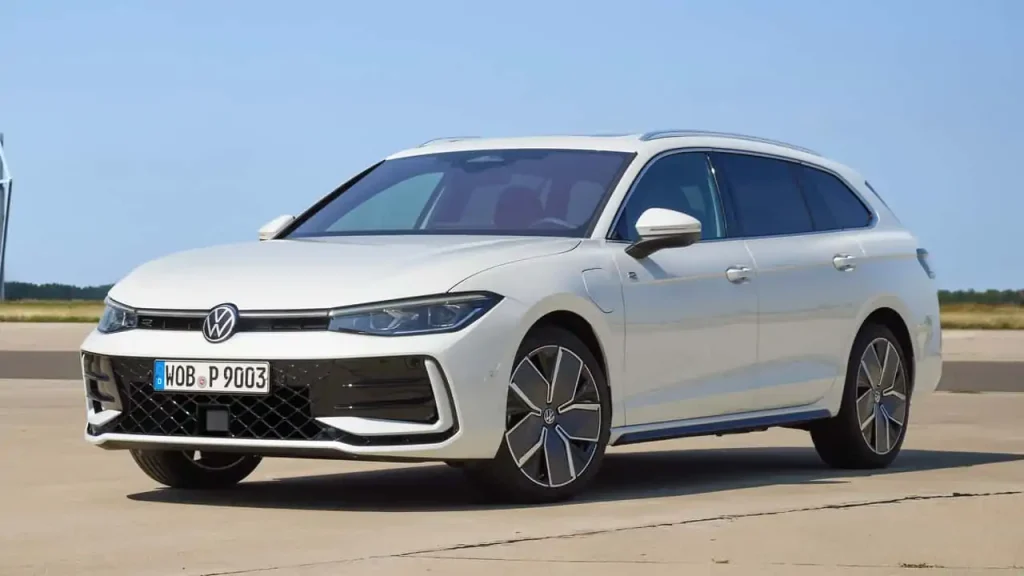
Architecture and the Kenyan market
Beneath the surface, the new Passat is built upon an updated iteration of its predecessor’s ‘MQB’ architecture, shared with the Golf and other recent Volkswagen models. The German automaker highlights the inclusion of new-generation adaptive suspension technology, promising sharper handling, along with revamped suspension, a fresh steering system, and Vehicle Dynamics Manager software to efficiently manage power delivery and vehicle systems.
The 2024 Volkswagen Passat wagon is scheduled to debut in European showrooms during the first quarter of 2024, which falls between January and March. Unfortunately, we do not know much about Kenyan versions as much, but we can be sure to see some of the aforementioned models make their way to our market as soon as they are released in similar markets like the UK and Australia. We will be sure to provide an update upon reception of this information.
